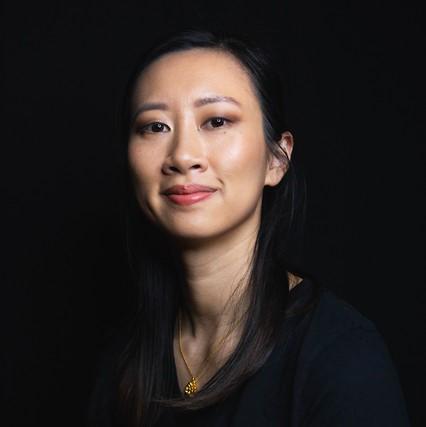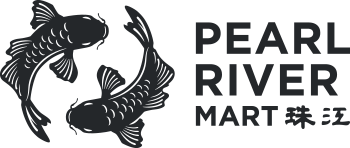
Curator-in-Residence Kelly Lan: Changing the World One Untold Story at a Time
Anandibai Gopalrao Joshi. Hazel Lee. Thelma Buchholdt. While you might have heard of these women, chances are you didn’t learn about them in history class. You were never taught that Anandibai Gopalrao Joshi was the first Indian female physician, or that Hazel Lee was one of the first Chinese American women to earn a pilot’s license, or that Thelma Buchholdt was the first legislator of Filipino descent in the United States.
Kelly Lan, the curator of our upcoming exhibition, AGAINST ALL ODDS: ASIAN WOMEN WHO DARED TO BE GREAT, never learned about such figures as she was growing up. In fact, she didn’t see much of herself in anything around her. That's why she created her educational organization, Hello Prosper, and this exhibition: to change that for others. We had the chance to speak to Kelly about why she started Hello Prosper, growing up in a Quaker school system, and what she hopes people get out of her exhibition.
Where did you grow up? What was your childhood like?
I grew up in Bucks County, Pennsylvania, which is about 40 minutes north of Philadelphia, as the oldest child of Taiwanese immigrants. Taiwanese identity has always been an area of fascination for me to explore because of the country's complex history. As for the community where I grew up, it was mostly Jewish without that many Asian Americans, and I went to a Quaker school system, from third grade through high school, with the same 30 people. Quaker school had a big impact on me, the concept that there’s a light in everyone.
How did you end up at a Quaker school? Are your parents Quakers?
[Laughs] No, they simply wanted the best for me. I went to a public school until the second grade, and I think they thought I was falling behind, that I would do better at a private school with more one-on-one attention.
The school seemed to be a little harder for me, at least compared to the other students. I felt like I had to work three times harder. But it made you well rounded. You had to do community service once a week. It was community based. Everyone had to do sports and also do things like wash the dishes. It had a lot of international students. It was a beautiful school with a beautiful campus.
But I did struggle with my identity. We never talked about Asian American history or Asian American figures. All there was was an elective of Chinese history, which had a whopping four people in the class. Of course I took it.
Tell me a little bit about your career trajectory, from college on.
I always knew I wanted to do something with design and business. In college, my background was in Communications Design. I was in art school, but it was more commercial art. I didn’t have the typical college life. While I did make lifelong friends, I would spend long hours in the studio, producing the same work over and over. We learned fast. We learned how to take critique and to not be so connected with our work. To realize we were solving real-life problems.
It sounds like they were preparing you for agency work.
That’s exactly right. In fact my first job was in advertising. I was doing packaging design, and I saw after two years that the UX designers and copywriters would leave on time while visual design would there until one in the morning. I knew I needed to make a career move. That’s when I decided on user-centered design. The idea of how to make interacting with a product a desired and pleasurable experience from beginning to end. I started taking classes and eventually got a UX job.
When did Hello Prosper come into the picture?
In my late 20s, I think I was so busy constantly thinking into the future. In terms of design, I was always thinking, How can I make something better? But at the same time, there was a part of myself that I still didn’t understand. My identity as an Asian woman was like this black hole. I wasn’t confident in it or in my Asian American experience.
Creating Hello Prosper was really out of that exasperation. I thought, I have to do something about this. I still have a learning journey ahead of me, I’m still figuring it out. But I know I can do it. I’ve always had that innate will, knowing I can change things.
How did you develop the company?
My day job helps to make it a self-funded initiative, but I knew that I still needed help. Growing up I always wanted to do everything on my own. I knew I could build a website, but I needed help with the writing part. It took me four months to write one story, between the research and creative nonfiction. So I went online and started networking. I found writers through Facebook groups. I created brand guidelines so that the stories would be consistent in voice and tone. I also found an illustrator [Bo Feng Lin] on Instagram.
That helped me expand my horizons as well. I expanded my scope to include South Asian women. I realized I needed to be more inclusive.
So it sounds like as you were educating yourself, you decided to focus on Asian women and their stories. How did you come upon that angle?
I saw this book by Vashti Harrison, Bold Women in Black History. I loved it and thought, We need one for Asian women! I went to the bookstore to see if there were any, but the ones I saw had only one or two Asian women in them.
I wanted the stories to be authentic so I hired writers who related to the figures or lived in that kind of upbringing. We also have a relationship with the family members of the people we’ve profiled. For instance, we interviewed Titania, the daughter of Thelma Buchholdt, a Filipina American politician and one of the figures in the exhibit.
Overall I hope Hello Prosper is a way for kids to have an opportunity to learn more about Asian American history and identity, to give them the tools that I didn’t have at that age. Growing up, things like the shape of my face and eyes bothered me. Mascara commercials didn’t apply to me. And I didn’t have the resources to help deal with those feelings. I just want to provide those resources that I didn’t have.
What do you hope people get out of your exhibition with Pearl River?
I’d want people to realize that the world doesn’t have to remain as it appears. That through harnessing your imagination, you can create the world you want to see.
And why Pearl River?
I think Pearl River is a great fit. I love its support of Asian American artists, that it’s a friendship store with a mission of cross-cultural joy. In terms of lack of Asian representation, you could easily go down a spiral of anger. You could let it fester. It’s a big change in headspace to instead make something enjoyable for everyone. My mission is to evoke pride and joy, and to bring joy to everyone, even if you’re not Asian American. To have a story that’s universal.
AGAINST ALL ODDS: ASIAN WOMEN WHO DARED TO BE GREAT will be on view in our TriBeca gallery from March 14 through May 3. Join us for the opening reception on March 14 from 5 to 7 p.m. Free and open to the public.
[Image courtesy of Louis Kang and Asian Arts Initiative]
